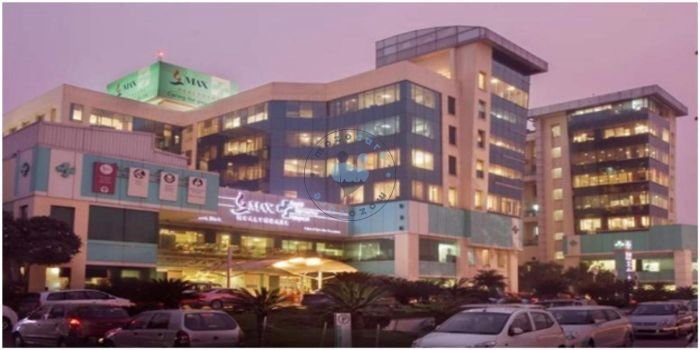

There are many factors that can affect the costs
Gastric band surgery, which can be also referred to as Lap-Band, is a very common bariatric surgery procedure, considered as the less invasive and safest for its reversible and adjustable characteristics. Gastric banding is performed with a laparoscopic approach, which involves a series of small cuts to the stomach and abdominal area, in order to insert and place a silicon device filled with a saline solution around the upper section of the stomach.
This band effectively reduces the stomach capacity to hold food, allowing the patient to feel more satisfied and full much quicker, reducing the calorie intake and cutting portion sizes. In general, a gastric band procedure will result in an excess weight loss of around 40-50 percent, depending on the previous weight of the patient and lifestyle after surgery.
The gastric band can also be adjusted accordingly as the rate of weight loss changes. Eventually, the stomach will be returned to its normal size once the desired level of weight loss is achieved, by removing the band. The main difference with the gastric bypass procedure is that gastric banding is not modifying the way in which the food is absorbed, it deals instead only with narrowing the food intake. As with every form of surgery, a gastric band procedure does carry risks and side effects that can include nausea (most of the time because the band is too tight), but major complications are extremely rare.
Possible complications include infection and bleeding, though these occur in less than 10 percent of cases.
Where are the best places to find a gastric band abroad?
Gastric Band Surgery at clinics and hospitals in the United Arab Emirates Gastric Band Surgery at clinics and hospitals in India Gastric Band Surgery at clinics and hospitals in Mexico For more information, read our Bariatric Surgery Options and Cost Guide .,
Gastric band surgery is a weight-loss surgery which uses an inflatable silicone band to create a small gastric pouch in the stomach, slowing down food consumption and limiting food intake. The surgery is performed to help patients with weight-loss after non-surgical methods such as change of diet and regular exercise, have failed to produce results. The procedure is generally only performed on patients who are morbidly obese, with a BMI (body mass index) of 40 or more. However, it may also be performed on patients who have a BMI of 35-40 who have health conditions which may threaten the patient's health when combined with obesity, such as diabetes, sleep apnea, high blood pressure or osteoarthritis.
Gastric band surgery is the most minimally invasive type of bariatric surgery, and it is most commonly performed laparoscopically. However, some patients may require the surgery to be performed as open surgery. The surgery can also be reversed, unlike other types of bariatric surgery. The procedure involves surgically applying the inflatable band around a section of the stomach, creating a a small pouch in the upper stomach. The pouch is filled quickly when eating and this creates the sensation of being full, in turn, prohibiting the patient from eating large portions of food and allowing the body to steadily lose weight.
After around 6 weeks, the band can be filled with saline solution to increase the level of food restriction. Once the patient begins to steadily lose weight, the band can be continuously readjusted as required, using a saline solution. Recommended for Patients who have a BMI of 40 or higher and have failed to lose weight through change of diet or exercise Patients with a BMI of 35-40 who also have health conditions such as diabetes, sleep apnea, high blood pressure or osteoarthritis Time requirements Number of days in hospital 1 - 3 days Average length of stay abroad 2 weeks.
The doctor should ensure that the patients condition is stable enough to travel. Number of trips abroad needed 1. Follow up visits may be needed to monitor progress and increase the restriction by filling the band with saline solution, however this can also be performed by a doctor at home. The gastric band can be inflated over time to further restrict food intake. Time requirements Number of days in hospital 1 - 3 days Average length of stay abroad 2 weeks. The doctor should ensure that the patients condition is stable enough to travel. Number of trips abroad needed 1. Follow up visits may be needed to monitor progress and increase the restriction by filling the band with saline solution, however this can also be performed by a doctor at home. Time requirements Number of days in hospital 1 - 3 days Average length of stay abroad 2 weeks.
The doctor should ensure that the patients condition is stable enough to travel. Number of trips abroad needed 1. Follow up visits may be needed to monitor progress and increase the restriction by filling the band with saline solution, however this can also be performed by a doctor at home. The gastric band can be inflated over time to further restrict food intake.,
Patients will need various tests ahead of surgery. Patients will have to follow a diet plan and the consulting doctor will advise the patient about discontinuing any medicines and prescriptions. Patients are likely to be advised to follow a physical activity program and to abstain from smoking.,
The patient is administered a general anesthetic before the procedure begins. The surgeon creates several small incisions in the abdomen, in order to access the stomach. The gastric band is inserted and locked around the stomach, creating a small stomach pouch. A small tube connects the gastric band to a device just beneath the surface of the skin. Through this, a saline solution can be inserted into the band to expand it, thus reducing the size of the stomach further over time.
Anesthesia General anesthetic. Procedure duration The Gastric Band Surgery takes 30 to 60 minutes. The small pouch means that people feel full very quickly, meaning they eat less and as a result lose weight.,
Post procedure care It is common to experience some pain at the site of surgery, and patients will usually spend a day or 2 in hospital. For the first 24 hours, patients will usually only be able to drink small amounts of liquid, and after that, solid food is slowly introduced.
The doctor may recommend taking blood thinning medication and wearing compression stockings to reduce the risk of a blood clot. It is also recommended to walk around as soon as it is comfortable enough to do so. Possible discomfort Discomfort and soreness is normal for a few days after surgery.,
As with most major surgeries performed under general anesthesia, gastric band surgery and other types of bariatric surgery carry a risk of infection, blood clots, excessive bleeding, and an adverse reaction to anesthesia. Specifically, gastric banding also carries a risk of gastritis, injury to the stomach or other organs, band erosion into the stomach lining, malnutrition, scarring inside the belly, problems with the access port, and vomiting.
Yes - one of the advantages of gastric banding is that it is easy to reverse the procedure. Approximately half of the patients who undergo gastric banding eventually have the band removed. However, the risk is that patients will gain weight again if the band is removed, so each patient's case should be considered individually.
It is possible to perform this procedure after a gastric bypass if the bypass procedure has failed in some cases. Your surgeon will need to review your medical records and examine you to determine if it is possible, appropriate, and safe for your individual case. In many cases, patients need a simple modification to the original procedure.
Small amounts of alcohol can be consumed after gastric banding, however, it is recommended to avoid it in general. Alcohol is very calorific, and consuming large amounts can make it difficult to lose weight - not to mention the other negative health effects.
Most patients lose about one-third to one-half of their extra weight over 2 to 3 years after surgery.
The gastric band adjustment is when the band is filled to change the level of restriction. Usually, patients begin with the band less full (less restriction), and over time the band can be tightened. When placing the gastric band, the tube which can be used to fill or unfill the band is connected to an access port just beneath the skin on the patient's abdomen. This access port is used to easily inject saline solution or remove the saline solution. The injection can be done in a quick session while the patient is awake, and it shouldn't be painful.,
| Lokmanya Hospitals | |
| Matilda International Hospital | |
| Max Super Specialty Hospital - Gurgaon | |
| Max Super Specialty Hospital Patparganj | |
| Max Super Specialty Hospital Saket | $6000 |
| Max Super Specialty Hospital Shalimar Bagh | |
| Medanta - The Medicity | $6500 |
| Medicana Bahcelievler Hospital | $4500 |
| Medicana International Istanbul Hospital | |
| Medicana International Samsun Hospital |

Pune, India

Hong Kong, Hong Kong

Gurgaon, India

New Delhi, India

New Delhi, India